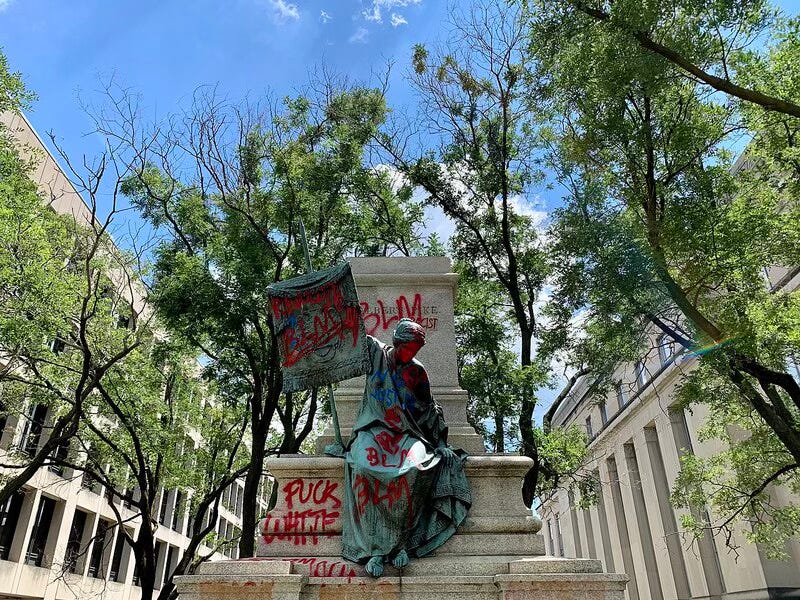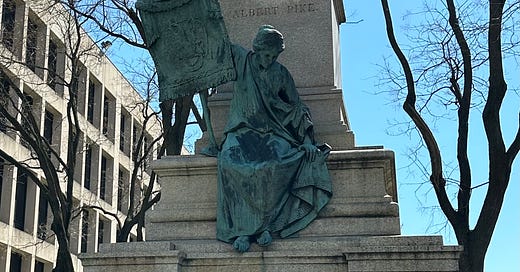Bet You Don't Know Albert Pike
In a town full of statues of famous men, Pike's gone but not forgotten
I’ve been on jury duty for the last week which is a whole story in itself but one not yet ripe for the telling. In my daily commute to the courthouse by the Judiciary Square Metro, I have been passing by an empty pedestal for a statue that’s gone missing.
Well, that’s not quite accurate. Albert Pike was removed from this pedestal on Juneteenth 2020, for obvious reasons. Following the Unite the Right rally in Charlottesville in 2017 and accelerated in the wake of George Floyd’s murder in May 2020, a racial reckoning was sweeping the nation, highlighting Confederate dignitaries who had places of honor in public spaces. Protestors pulled down the statue and the National Park Service finished the job.
Albert Pike was a Confederate general, the only one honored with an outdoor statue in the District of Columbia. It was erected at the request of the Supreme Council, Southern Jurisdiction of the Scottish Rite of Freemasonry. While there were objections to this action, the Freemasons got their way by depicting Pike as a civilian, rather than a solder. The dedication took place on October 23, 1901, consistent with the erection of other monuments to the Lost Cause. It was later the site of gatherings of the United Daughters of the Confederacy and followers of fringe political activist Lyndon LaRouche.

Well you can take the man off the battle field, but you cannot take the stain of the Confederacy and its racist world view off the man. While Pike represented Native American tribes in claims against the federal government, he walked out of the national convention of the anti-Catholic Know Nothing party in 1856 when it failed to adopt a pro-slavery platform. Having spent a good portion of his career in Arkansas (despite being a native of Massachusetts), per Wikipedia, “Pike signed a pamphlet which proposed expelling all free African Americans from Arkansas. It said that the ‘evil is the existence among us of a class of free colored persons.’" He may or may not have been a member of the Ku Klux Klan, although given the written record he left behind, it hardly matters.
Pike was initially buried in Georgetown’s Oak Hill Cemetery but his remains were eventually removed to the Masonic Temple on 16th Street NW, a site that figures prominently in Dan Brown’s The Lost Symbol, the follow up to his best selling novel, The Da Vinci Code.
It’s not clear to me why the pedestal remains other than it also honors the Freemasons who are still around as some kind of private men’s club that engages in community and charitable works as well as the odd bit of cosplay. (That’s the Goddess of Masonry holding up the Freemason banner.) The whereabouts of the statue itself is a mystery.




